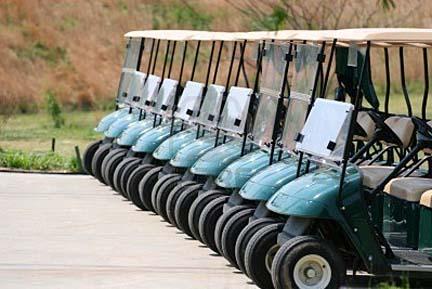 It might seem to many in the business who are struggling to make ends meet that golfers still are using their clubs as doorstops, conversation pieces or just about anything except for playing golf, when in fact the opposite appears to be true.
It might seem to many in the business who are struggling to make ends meet that golfers still are using their clubs as doorstops, conversation pieces or just about anything except for playing golf, when in fact the opposite appears to be true.No, golfers arent returning to the game in record numbers, but the number of players stepping away from the game has slowed considerably.
According to Jim Koppenhaver, golf industry analyst and owner of Pellucid Corp., there was a 2 percent drop in the golfer base in 2012 of 400,000 players. And while that might not sound encouraging on its face, it is great news compared with 2011 when 7 percent of the golfers, or 2 million players, stepped away from the game.
The number of golfers in the U.S. stands at just more than 24 million, which is down considerably from the all-time high of nearly 30 million in 2002.
All of the players lost in 2012 were male. The female golfer population, one that the industry has been chasing for some time because of growing disposable income, actually grew last year.
The bad news pieces to this puzzle are the losses were juniors as well mid-career males (age 35-54) earning more than $75,000 per year and who were playing 10-39 rounds per year.
It is worth remembering that there was an increase in rounds played in 2012 of nearly 6 percent, much of which Koppenhaver says is attributable to unseasonable weather conditions throughout the winter and early spring.
Those gains, however, seem like a distant memory as cold, wet conditions throughout much of the country took a toll on rounds played in the first three months of this year.
Rounds played in March were down 23 percent compared with the same month last year, according to the Golf Datatech National Golf Rounds Played Report. Year-to-date rounds played through the first three months of the year are down by 15 percent compared to the same period in 2012, according to the report.
Rounds played were down by double-digits in March in 32 states. Some of the hardest hit states were Minnesota, where play was down by 95 percent, Iowa (down 80 percent) and Illinois (down 79 percent).
Much of those losses can be attributed to wet conditions, unseasonably cool temperatures or a combination of both, as was the case in parts of Illinois and Wisconsin.
Only eight states experienced an increase in rounds played, led by Oregon (up 79 percent), Washington (50 percent) and California (14 percent).
The recent trend of a downward spiral in rounds played in 2013 coupled with a continued loss of golfers, albeit a controlled release, is a reminder that a slow and steady decline is likely to occur, Koppenhaver says, until grow-the-game initiatives at the facility or industry level and other efforts address barriers to the game like cost, time and difficulty as well as generational challenges.

